Field Test: Thompson Center’s Affordable 6.5 Creedmoor Compass Rifle
Tom McHale 06.13.17
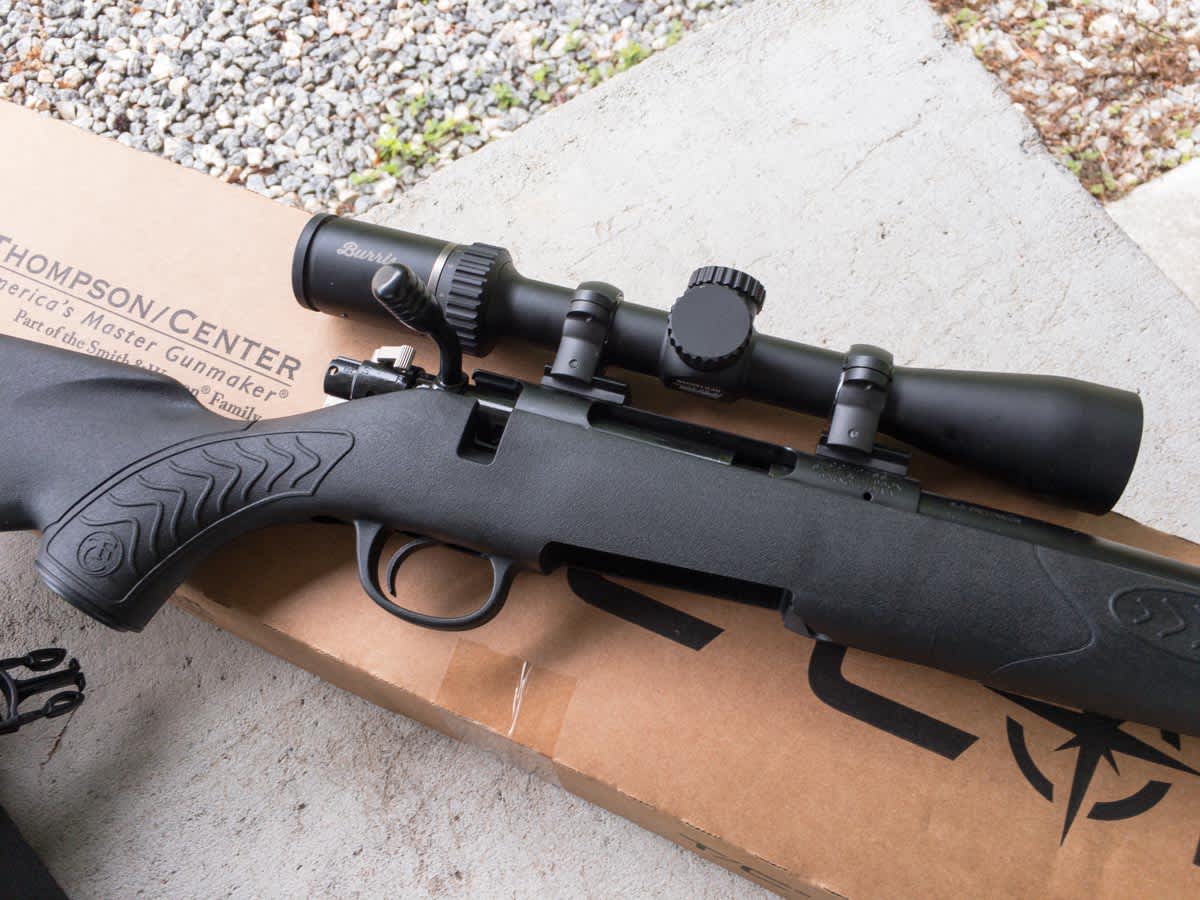
Long(er) range shooting is so hot right now. Among the trendy calibers for long-range target shooting and hunting is the 6.5mm Creedmoor. It’s not the only one, and I’m not going to get into a “which is the best” discussion here, but it does a heckuva job. In comes the 6.5 Creedmoor Compass Rifle.
Earlier this year, the folks at Thompson Center (owned by Smith & Wesson) released a new and very affordable rifle – the Compass. More recently, the company launched this rifle chambered in 6.5mm Creedmoor. Being all gushy about 6.5mm Creedmoor, I had to get my hands on one for testing.
Before I get into the rifle itself, I ought to talk about exactly why 6.5mm Creedmoor is so interesting for longer range applications. To keep things (relatively) simple, let’s do some quick velocity, distance and energy comparisons to a common multipurpose cartridge, 308 Winchester. Again, this isn’t a “better” or “not better” thing. Like 9mm and .45 in the handgun world, they’re just different.
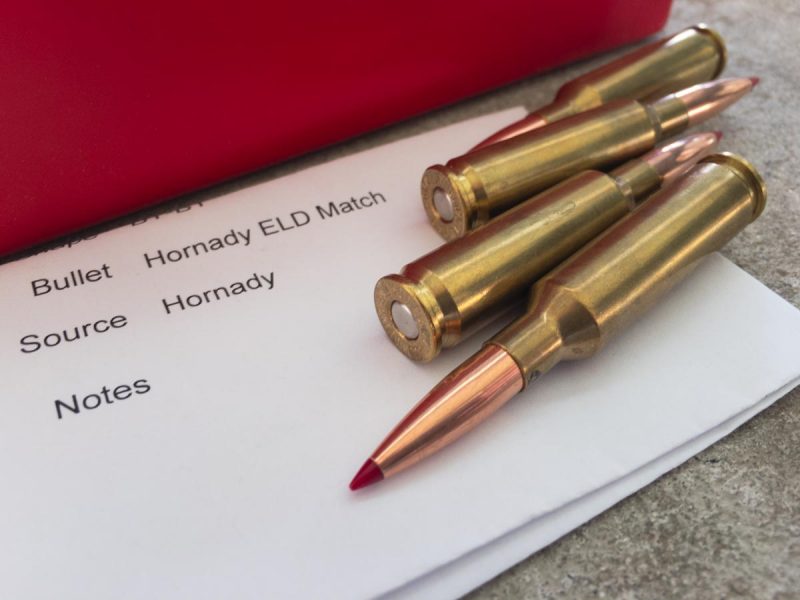
Just for kicks, let’s look at the American Eagle 308 Win. 150-grain FMJ load. It flings the projectile at a factory-rated 2,820 fps. At the muzzle, that yields 2,663 foot-pounds of kinetic energy. Where I live, that bullet is going to stay supersonic (1,125 fps or more) until just shy of 1,000 yards, where it will be traveling at 1,118 fps. Oh, and over that distance, that 150-grain FMJ bullet will drop a whopping 404.17 inches, assuming I zeroed it at 100 yards. That’s almost 34 feet! Oh, and the kinetic energy when it gets there 1.74 seconds after you pull the trigger is 416 foot-pounds.
Looking at the American Eagle 140-grain 6.5mm Creedmoor OTM load, we start to see some significant differences. Its factory-rated velocity is 2,700 fps, so muzzle energy works out to 2,275 foot-pounds due to the slightly lighter bullet weight and lower velocity. However, this bullet will fly almost 1,350 yards before going subsonic. At 1,350 yards, it’s moving at 1,116 fps and will deliver 387 foot-pounds of energy. At 1,000 yards, where the 308 Win. went subsonic, the 6.5mm Creedmoor is still cooking at 1,390 fps with energy of 600 foot-pounds. It’s also dropped 342 inches compared to the 404 inches for the 308 Win. That’s more than a 5-foot difference.
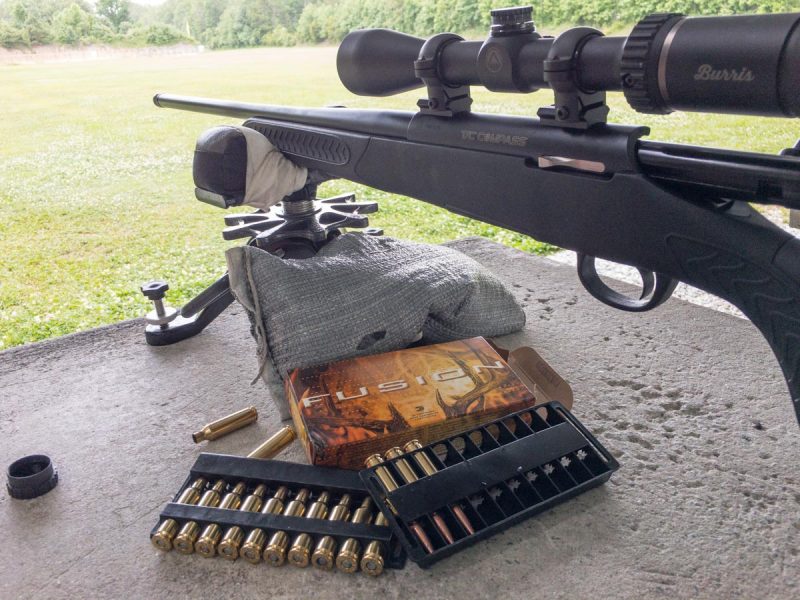
The other big deal is the impact of a crosswind on the bullet flight. A 10-mph sideways crosswind will blow that 308 Win. bullet 88 inches (7.3 feet) sideways. The 6.5mm Creedmoor bullet will drift only 58.75 inches under the same conditions.
The bottom line is this: Since the ballistic coefficient of the 6.5mm Creedmoor projectile (.580) is much higher than that of the 308 Win. bullet (.408), it has less drag, so it carries velocity over a longer distance. Since it’s exposed to gravity for less time for any given range, it doesn’t drop as fast or blow sideways as much. In plain English, and at risk of butchering ballistic science terminology, high ballistic coefficient bullets such as the 6.5mm Creedmoor are slippery, so they shoot well at longer distances.
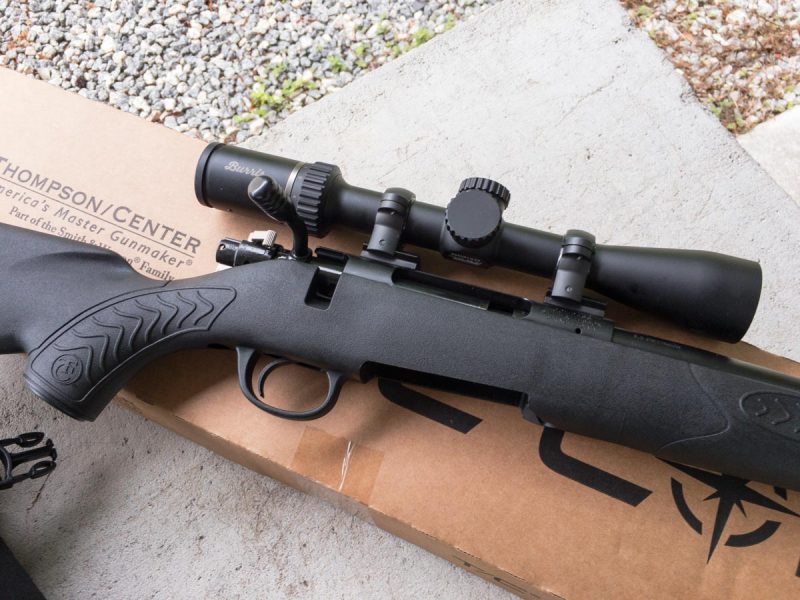
The Compass
The Compass is designed to provide the right features that make for good shooting performance at a budget price point. The rifle carries an MSRP of just $399, and you can find it on the shelves for less if you shop.
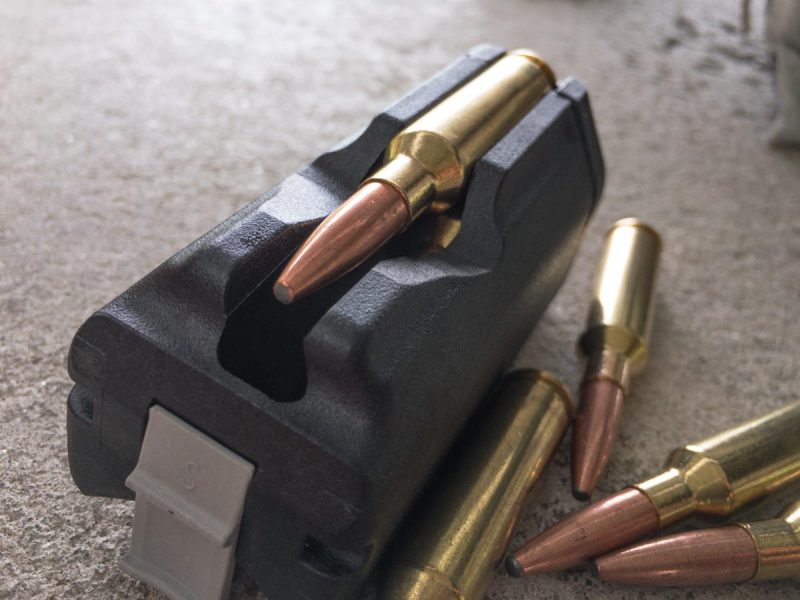
Like most bolt guns, the Compass is available in an array of caliber options. Some specs, such as magazine capacity, barrel length and twist rate, vary a bit according to caliber choice. For example, larger cartridge sizes have a 4+1 instead of 5+1 magazine capacity. As I write this, you can order a Thompson Center Compass in any of the following cartridges:
- 204 Ruger
- 22-250 Remington
- 243 Winchester
- 270 Winchester
- 300 Winchester Magnum
- 308 Winchester
- 223 Remington / 5.56mm
- 30-06 Springfield
- 6.5mm Creedmoor
- 7mm Remington Magnum
- 7mm-08
The barrel itself on the Compass is one of the standout features for a number of reasons. The rifling pattern is called 5R. That means there are five grooves, but they aren’t “cut” with sharp edges. Instead, the rifling is more rounded in shape, so the bullets are “mushed” into the rifling rather than cut. This kinder and gentler pattern collects less copper fouling, leading to easier cleaning and longer barrel life. The 6.5mm Creedmoor barrel uses a 1:8-inch twist rate, although that varies with caliber choice.
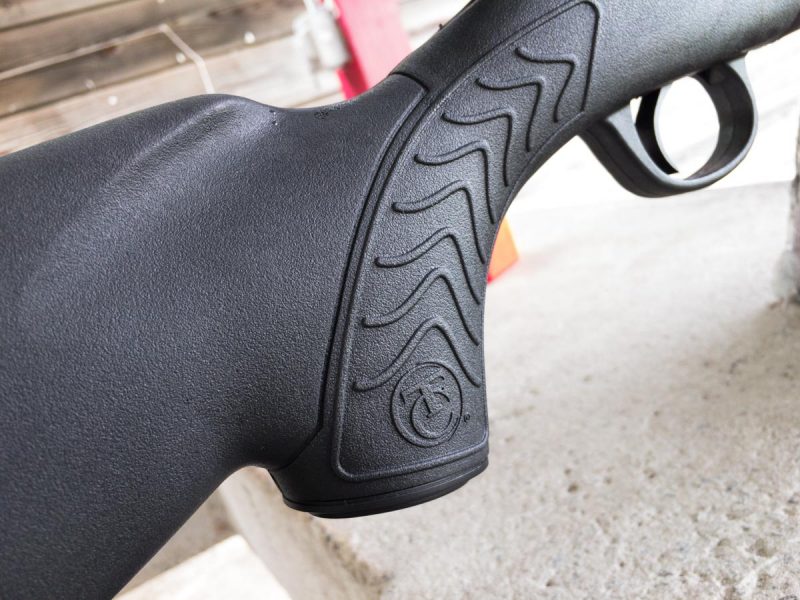
The barrel is also factory threaded so if legal in your state, you can easily add a suppressor with no extra gunsmithing required. On this 6.5mm Creedmoor rifle, the threading pattern is 5/8×24. On smaller caliber Compass rifles such as the 243 Win. and below, the threading pattern is 1/2×28. The company ships the rifles with a thread protector cap installed. Last but not least, the barrel is free-floated. I could easily slide a business card between the stock and barrel all the way back to the receiver.
The net result of all this is a factory accuracy guarantee. Using premium ammunition, you should be able to shoot three-shot groups into 1 minute of angle, or 1.04 inches at 100 yards.
The bolt is a three-lug design. The handle has a 60-degree lift designed to provide space for easy operation with a scope installed. With my scope configuration, there was plenty of space for fast and easy bolt operation. The bolt also features a three-position safety lever. Pushed forward, the Compass is ready to fire. Pull the safety lever all the way back, and the bolt and trigger are locked. If you want to operate the bolt but disable the trigger, just move the lever to the middle position. While we’re talking about the bolt, you’ll spot a spring-loaded push lever on the left side of the receiver. This is the bolt release. Just push that in to remove the bolt from the receiver for cleaning or travel. You’ll also need to use the bolt release lever to re-install the bolt.
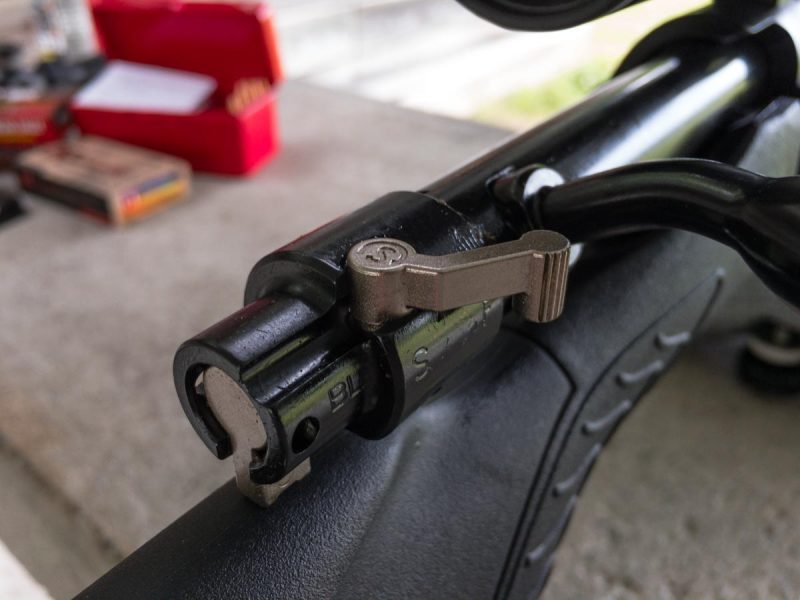
The Compass features a removable magazine that’s flush with the stock – even the release latch is inset, so nothing is in the way of your support hand. The magazine is mostly polymer and well suited for use and abuse in the field. The 6.5mm Creedmoor version holds five rounds in the magazine plus an extra in the chamber if you like.
The trigger as shipped measured exactly 5 pounds according to my Timney Triggers scale. It’s a single-stage trigger with no detectable take-up stage, and the break is crisp. I liked it. The factory ships the Compass with the adjustable trigger set on the heavier side. That’s no problem because you can easily adjust it.
The stock is composite and features functional grip patterning on the forend and grip. It’s aggressive enough to work well with gloves, but not abusive to bare hands. The included recoil pad was effective, although I don’t find 6.5mm Creedmoor to be hard kicking. It’s a plenty loud caliber, but pleasurable to shoot.
Accuracy Testing
The Compass comes with scope bases in place, so all I needed to mount a Burris Fullfield E1 3-9x40mm optic was a set of rings.
I had a small assortment of 6.5mm Creedmoor ammo on hand, so I shot multiple three-shot groups of each type from 100 yards. I averaged the group measurements for each ammo type to get the figures below, so they should be a decent indication of what the rifle will do.
| Ammunition | Average Group Size, 3 Shots |
| American Eagle Open Tip Match 6.5mm Creedmoor 140-grain | 1.64” |
| Handload: 6.5mm Creedmoor 140-grain Hornady ELD Match, 41.0 grains IMR 4350 | .77” |
| Hornady Match 6.5mm Creedmoor 120-grain | 1.16” |
| Federal Fusion 6.5mm Creedmoor 140-grain | 1.55” |
The Compass is a lot of rifle for the money. I’m a big fan of shooting suppressed, and just having the factory threaded barrel is a big plus for me. Based on my quick and dirty accuracy testing, the rifle will shoot if paired with the right ammo. For example, I measured groups of .49, .72, and .72 inches using my hand load, Hornady 120-grain Match, and Federal Fusion 140-grain loads respectively. I’ll be doing some more experimentation to see what it really likes. With the accuracy guarantee and a lifetime warranty, it’s hard to go wrong with this rifle, especially considering the price point.

Update:
I had the chance to shoot a few groups with a suppressor attached. The Specwar 762 is a beast of a suppressor that uses a quick attach/detach system to mount to either a Trifecta Flash Hider or Trifecta Muzzle Brake. I had a brake handy, threaded for the 5/8×24 pattern used by this Compass rifle so I removed the thread protector and mounted the brake and suppressor. Having access to some of the same ammo used before and a few extra minutes, I fired some additional three-shot groups.
| Ammunition | Group Size, 3 Shots |
| American Eagle Open Tip Match 6.5mm Creedmoor 140-grain | .90″ |
| Hornady Match 6.5mm Creedmoor 120-grain | .71″ |
| Federal Fusion 6.5mm Creedmoor 140-grain | 1.17″ |
While I didn’t have time or ammo to shoot lots of groups of each type, early indications suggest that this rifle likes to have a suppressor attached. It certainly performed well, obviously reducing the noise of the 6.5 Creedmoor ammo, but also smoothing out the recoil even more. The 6.5 doesn’t have uncomfortable recoil to start with so reducing even more spoiled me a bit.
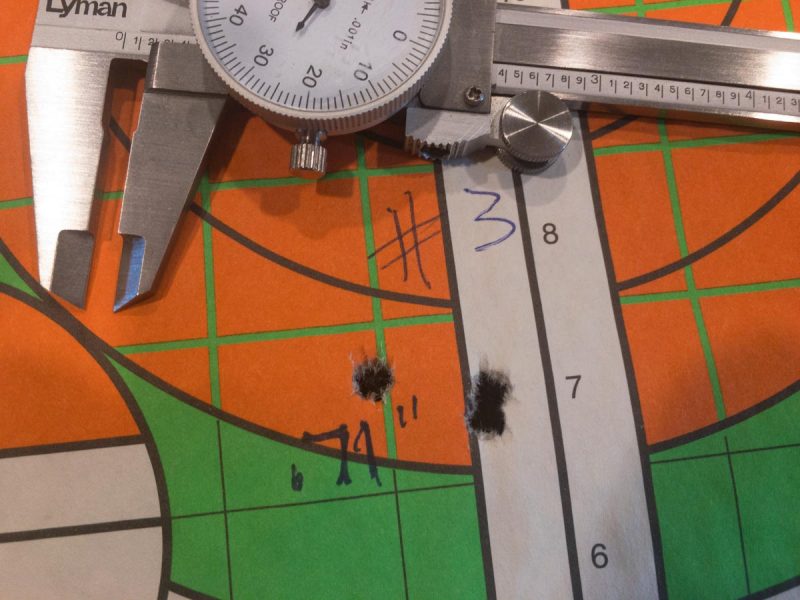
Specifications
Caliber: 6.5 Creedmoor
Finish/Stock: Blued/Black Composite
Trigger: Adjustable
Barrel Length: 22″
Rate of Twist: 1:8
Capacity: 5+1 Detachable Magazine
Length of Pull: 12.5″ – 13.5″
Overall Length: 41″
Weight: 7.25 lbs.
Sights: None
Rifling: 5R
Model #: 11703
MSRP: $399


